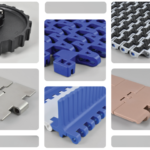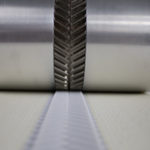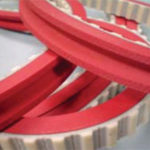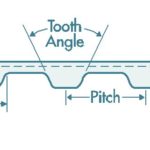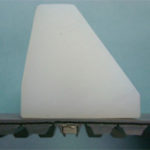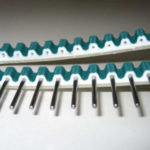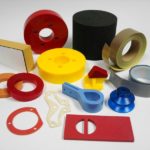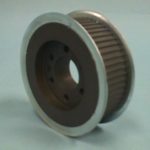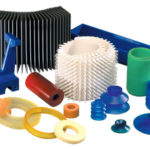Globax news
Blog
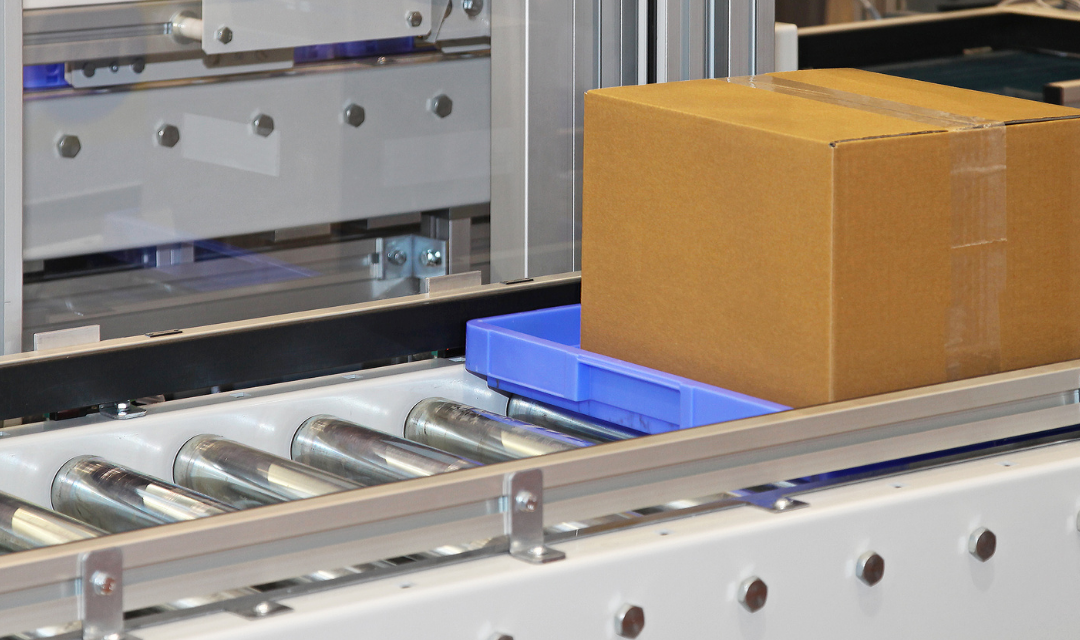
All About Roller Conveyors – Types, Design, and Uses
New to roller conveyors? Consider this.
According to Thomas Net:
“Conveyors are material handling systems that allow for easy transporting of products, from powder to bulk to complicated geometries. They are integral to all kinds of systems, as they provide a fast and safe method of handling large volumes of materials. There are many kinds of conveyors, but their working principle remains constant across each type; move objects via gravity or by mechanical power from one destination to the next by using a frame that holds belts, buckets, rollers, or other moving components. The roller conveyor is the focus of this article and is one of the most popular conveyor varieties employed. The types, designs, and uses of roller conveyors will be explored, as well as how to specify one of these systems for any application.
What are roller conveyors?
“Before engaging in any specifics, we recommend a look at our article on understanding conveyor systems, which provides a first pass at these handling systems and their basic functionality.
“Simply put, roller conveyors are a form of conveyor belt that utilizes rollers – evenly-spaced rotating cylinders – to allow objects to skate across its surface. They move material from one place to another destination, and often leverage gravity or implement small motors to do so. The transported material must have a rigid riding surface that is supported by a minimum of three of the rollers. They are ideal for accumulation applications, and the rollers can reduce the inertia of products at a higher speed, making them useful conveyors after high speed sorting machinery.
“Since the design of these conveyors is simplistic, many advancements have been made to allow roller conveyors to keep up with industry trends. The biggest innovation is the drive or live roller conveyor, where each roller is connected to a motor via a belt/chain/shaft to increase controllability. This equalizes the rate with which materials move down the pathway, and also allows these conveyors to have limited use in reverse, i.e. from low to high elevation. They can work well in bi-directional applications, as the rollers can direct material in either direction by switching the direction of the motor. In the next section, we will investigate the different kinds of powered roller conveyors, as there are many kinds suitable for use with a wide range of materials.
Types of roller conveyors
“This section will detail the important kinds of roller conveyors present in the industry. We are highlighting the major designations here, but know that more types exist and that there is a lot of overlap between these different types. Also, these roller conveyors can be a mix of many designs, depending upon the manufacturer.
Gravity roller conveyor
“The simplest of this list, the gravity roller conveyor is a frame that holds free-rotating rollers and uses gravity to slide material down the line. They are used to carry light to medium weight products that do not require a motor, which makes them economical solutions for designers. They can be purchased with accessories such as curves, pop up stops, supports and hanging brackets, slide rails, and more, and are often made from steel, aluminum, and plastic. They are often implemented as temporary conveyors, alternatives for skate wheel conveyors, heavy-duty applications, and accumulating loads that do not require any specialized timing.
Belt driven roller conveyor
“The belt-driven live roller conveyor utilizes a motorized belt to power each roller, allowing this conveyor type to control the motion of the materials being transported. They are preferred over typical belt conveyors when items must be stopped momentarily at control points, items must be turned, and/or side loading or slide unloading is necessary. The belt can be straight (as shown in Figure 3) or can be in a V shape for curved roller conveyors. Some belt-driven roller conveyors can support products wider than the frame width, thanks to the rollers being higher than the frame. In any arrangement, the rubber belt underneath the rollers must not encounter moisture, excessive heat, or debris as these conditions can quickly degrade the system. These conveyors are often used for handling medium to heavy loads that are dry and clean, and which require periodic stopping and/or reversible action.
Chain driven roller conveyor
“The chain-driven roller conveyor is like the belt-driven conveyor, but instead of using belts it implements a chain to power each roller. They are used when heavy-duty conveying is required and where adverse conditions prevent the use of typical belt-driven conveyors. Figure 4 shows a roll-to-roll chain conveyor, where the chain is wrapped around each roller and holds on to two sprockets on each roller. These are best suited for reversible operations and extreme duty loads, as the power transmission is high in these designs. These are distinct from the single strand chain driven roller conveyor, where the rollers are driven by a single, non-looped continuous chain via sprockets on the roller. A continuous hold-down bar always keeps the chain engaged, but these conveyors are only rated for medium-to- heavy-duty service as they are not as powerful as their roll-to-roll counterpart.
Line shaft roller conveyor
“Line shaft roller conveyors are powered, as their name implies, by a rotating shaft where each roller is belted to this powered shaft. They are separately connected to the line shaft via urethane belts and drive spools, making this type of conveyor quiet and easy to maintain. While still a powered roller conveyor, the drive spools will slip in the presence of minimal back pressure (the force on the rollers when material has accumulated and cannot move down the line), causing the rollers to simply stop without impacting others. A line shaft can power over 100 feet of both straight and curved rollers, increasing the efficiency of the conveyor system. They are reversible and ideal for accumulation, minimum back pressure, sorting, and other medium-to light-duty applications.
Zero pressure roller conveyor
“Zero pressure roller conveyors (also known as pressureless accumulating conveyors) are made to prevent any items from touching while on the conveyor. They are a high-tech control system that utilizes sensors and motors to energize and de-energize certain ‘zero pressure’ zones of the track. By doing so, a buffer zone is created between products, allowing no accumulation to occur. Certain rollers are internally powered by motors that are connected directly to the control system, and photocells detect when a product has passed into/out of zones. They can be bought as kits to retrofit older conveyor systems and are the premier choice for automation applications where timing, rate of movement, and consistency are needed. While more complicated and electronically actuated than previous roller conveyors, zero pressure designs are quite efficient and regulate the flow of material, creating an overall smoother transfer.
Specifications and selection criteria
“Regardless of which roller conveyor type is chosen, there are some common specifications that must be determined before buying the right model for the job. Below are some of the typical conveyor specifications that you will encounter when sourcing for the right conveying system.
Roller and frame material
“The first necessary specification will be the material used to construct the frame and the rollers. The frame is usually aluminum or steel, but this depends on how much loading will be done on the system and the value of the rated frame capacity. The rollers are much more varied in composition, as they make direct contact with your product and can impact its behavior when moving. Some rollers are coated in plastic or rubber to increase friction, while others are simply aluminum or steel drums; choose a roller that will keep your product on the line, and that will not negatively impact the integrity of your product. Similarly, choose a frame that can carry the weight of the material being transported as well as the weight of the rollers.
Roller size and orientation
“Determine how large the material on the conveyor will be, and then determine the optimal arrangement of the conveyor so that it will not impair/obstruct the movement of the object. This first means determining the size of individual rollers, which his done by considering the load and the loading conditions. For example, a heavier, high impact load calls for larger rollers, while a slow, low impact load will benefit from smaller rollers. Next, figure out the spacing of each roller by finding the length of the load touching the conveyor surface, and determining the spacing so that three rollers are always in contact with this surface. Finally, figure out if the product will overhang from the conveyor; if so, purchase a high set roller conveyor which will allow for overhang. If the product should be contained within the conveyor dimensions, consider a low set roller conveyor.
Load type & accumulation
“The load type and accumulation are dependent upon the product at hand. How heavy is the product? Is it fragile, and/or can it be in contact with other items on the line? The answers to these questions will further detail what kind of roller conveyor will be useful; gravity roller conveyors are optimal for flat bottom, low-to-medium weight objects such as boxes, bags, and totes, but they shouldn’t be used with excessively delicate and unwieldy geometries such as electronics and manufacturing parts.
Distance and curvature
“Determining the span and curvature of the conveyor will also help narrow down your search. For example, flat belt roller conveyors cannot be used if a curve is present, so you should not purchase this design is you need a curve. Similarly, if you have hundreds of feet to cross, consider a more efficient design such as the line shaft roller conveyor so that energy is conserved where possible.
Behavior, control, and environment
“Finally, consider the desired motion of the material, how much control should be allowed, and the environment in which the conveyor will operate. If there will be excessive heat, dust, dirt, and moisture, choose a more rugged design such as a chain roller conveyor. If exact timing and zero pressure is needed, investigate the high-tech roller conveyor options that will provide you with the precision you need. If you just need a quick, low tech way to transfer an object from point A to B, you may not need to look any farther than the traditional gravity or belt roller conveyor.”
